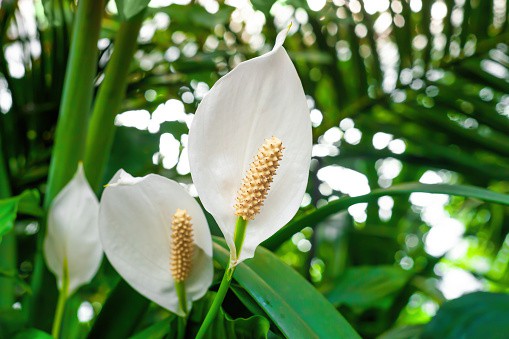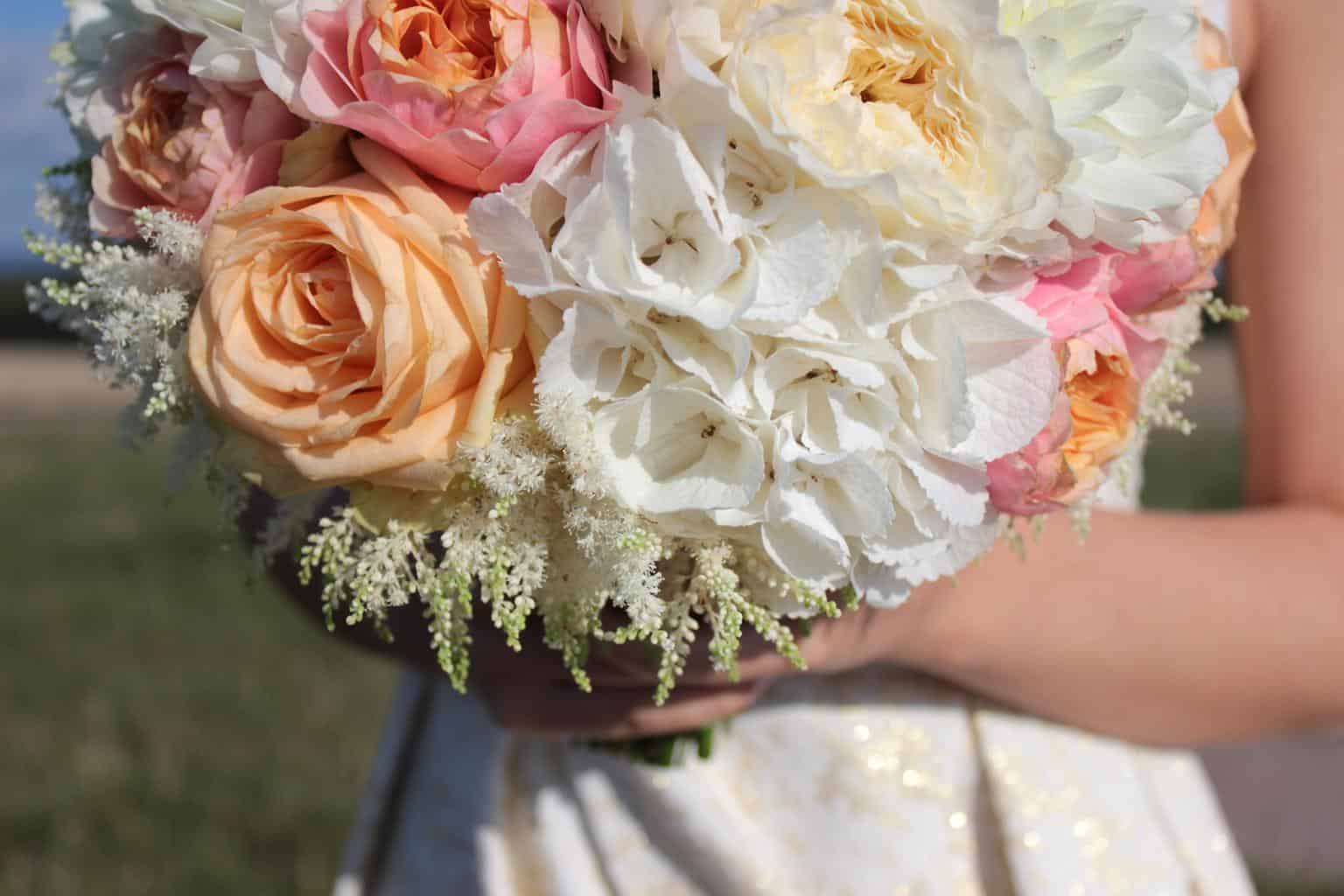The Peace Lily, also known as Spathiphyllum cochlearispathum, is a species of flowering plant. Its genus name, “Spathiphyllum,” is derived from two Greek words, “spath” which means “spathe” or “leafed cup” and “phyllon” which translates to “leaf”. This evergreen perennial is native to Ecuador and belongs to the Araceae family. It is also a popular houseplant and is classified as a herbaceous plant.
How to Plant
The Peace Lily is suited best to partial shade. Its ideal growing environment would be bright light without direct sunlight. When deciding on an area to plant it, make sure that it is sheltered from strong winds. The ideal climate for the Peace Lily is between 65-80°F (18-27°C).
Choose a soil mixture of equal parts soil, peat moss, and perlite when planting the Peace Lily. Make sure that it is moist and well-draining. Make a hole in the soil slightly larger than the potted plant, and then plant it in the hole.
Choose a pot that is one or two inches larger than the root ball and make sure that it has good drainage. Repot it every two to three years, and make sure that you use fresh soil mixture.
Meaning and Symbolism
Peace Lilies have a long cultural association with peace and tranquility. Symbolically, they are used to express sympathy in times of grief and condolences and are often sent as gifts to pay respects. In ancient Chinese civilization, Peace Lilies were also known as the “flower of life”. In Eastern Asian cultures, this type of flower is believed to represent the essence of human beauty and purity.
History, Mythology, and Religious Significance
Peace Lilies have long been associated with religious and spiritual beliefs. Ancient Egyptians viewed the Peace Lily as symbol of upper and lower Egypt, while Ancient Greeks believed the flower represented harmony and oneness with nature. In Buddhist tradition, the Peace Lily was a sacred flower and was said to represent the embodiment of truth and peace. In Christian art, Peace Lilies are also often seen as representations of eternity, renewal, and death.
Flower Varieties and Their Defining Characteristics
The Peace Lily comes in a variety of different sizes and colorful varieties. The most common Peace Lily varieties are white and green, but there are also varieties that come in shades of pink, yellow, and red. The largest variety of Peace Lily is the hybrid Spathiphyllum wallisii, which can grow up to 5 feet tall. The smallest variety is the Spathiphyllum floribundum, which is commonly used as an indoor potted plant.
How to Pot and Repot
When choosing a pot for your Peace Lily, check to make sure that it has drainage holes and is the right size. The pot should be no more than 2 inches (5 cm) larger than the current size of the Peace Lily. Make sure to use a potting medium that is well-drained, such as a mixture of equal parts soil, peat, and perlite. Before repotting the Peace Lily, make sure to saturate the soil with water and let it sit for at least 10 minutes before potting it.
Next, place the Peace Lily in its pot and fill in any gaps with potting soil. Press down the soil around the plant and then water it. When finished, place the potted plant in a location that offers the proper levels of shade.
How to Prune
Peace Lilies require regular pruning to maintain a healthy plant. It is best to prune the plant in the early spring when it is just starting to grow. Check for any yellowing, brown, or wilted leaves, and snip them off with a pair of sharp scissors. Make sure to remove any insects or eggs that you may find on the leaves as well.
How to Propagate
The Peace Lily can be propagated through division or seed. Growing new plants by division is by far the easiest and most reliable method, and it requires no special skills or knowledge. Once the Peace Lily has finished blooming, take it out of its pot and gently divide the plant into two parts. Allow both pieces to dry out before replanting them into two separate pots.
Common Pests and Diseases
Peace Lilies are relatively easy to maintain, but can still be prone to diseases and pests. One of the most common problems is root rot, which is caused by overwatering or too much humidity. To avoid this, make sure the potting soil is well-draining and that the Peace Lily is not getting too much water. Over time, the soil may become compact and this could lead to root rot. Make sure to remove compacted soil and replace with fresh soil every 2-3 years.
Insects such as aphids, mealybugs, and scale can also be a problem. To prevent these pests, make sure to trim off any dead or dying leaves and keep the plants free of debris. The Peace Lily is also vulnerable to fungus, so make sure to keep an eye out for any discolorations on the leaves.
Frequently Asked Questions
- Q: What is the family of the Spathiphyllum cochlearispathum?
- A: The family of Spathiphyllum cochlearispathum is Araceae.
- Q: Is the Peace Lily an annual or perennial?
- A: The Peace Lily is a perennial flowering plant.
- Q: What is the ideal growing environment for the Spathiphyllum cochlearispathum?
- A: The ideal growing environment for the Spathiphyllum cochlearispathum is bright light without direct sunlight and a temperature between 65-80°F (18-27°C).
Fact Sheet
| Peace Lily | Spathiphyllum cochlearispathum |
|---|---|
| Family | Araceae |
| Plant type | Perennial |
| Mature size | Comes in a variety of sizes with the largest growing up to 5 feet tall. |
| Sun exposure | Partial shade |
| Soil type | Well-drained soil |
| Soil pH | 5.5 to 7.5 |
| Bloom time | Spring to Summer |
| Flower color | White, pink, yellow, red, etc. |
| Hardiness Zones | 10 to 11 |
| Native Area | Ecuador |
What we love from Amazon this week
Buy these wonderful flowers directly from Amazon:















